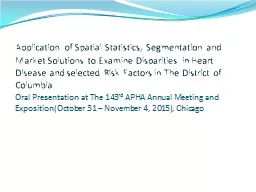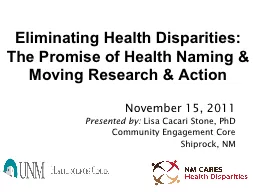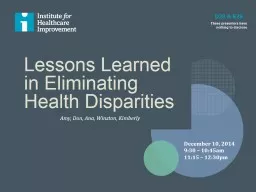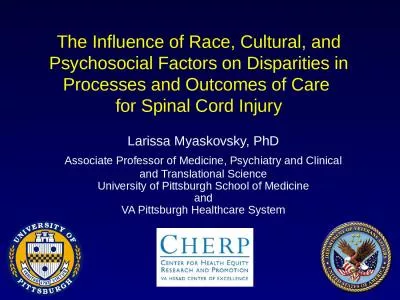PPT-Application of Spatial Statistics, Segmentation and Market Solutions to Examine Disparities
Author : cleverfan | Published Date : 2020-06-22
Oral Presentation at The 143 rd APHA Annual Meeting and ExpositionOctober 31 November 4 2015 Chicago George Siaway PhD Christine A Clarke MS Fern JohnsonClarke
Presentation Embed Code
Download Presentation
Download Presentation The PPT/PDF document "Application of Spatial Statistics, Segme..." is the property of its rightful owner. Permission is granted to download and print the materials on this website for personal, non-commercial use only, and to display it on your personal computer provided you do not modify the materials and that you retain all copyright notices contained in the materials. By downloading content from our website, you accept the terms of this agreement.
Application of Spatial Statistics, Segmentation and Market Solutions to Examine Disparities: Transcript
Download Rules Of Document
"Application of Spatial Statistics, Segmentation and Market Solutions to Examine Disparities"The content belongs to its owner. You may download and print it for personal use, without modification, and keep all copyright notices. By downloading, you agree to these terms.
Related Documents














